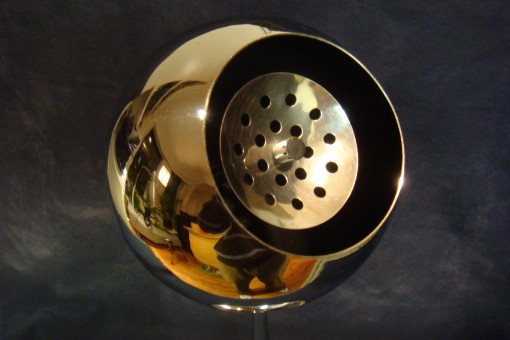Object History
Posted on December 19, 2010 | posted by:The first time I ever attended an auction, my heart raced and my cheeks felt flush. True, the auctioneer’s pitch and the urgency of bidders create a certain air of suspense; but it’s not just that. There’s all this…stuff. Old and new, junky and cool. I still love to wander the aisles of box lots, comparing the weights and textures of 8mm film cameras, graphic envelopes designed for the UN, handbags with Bakelite handles, linens in vintage patterns. I am constantly amazed by the diversity of goods available outside the typical retail outlet, and how much these things are worth.
These days, many bargain-hunters shop for profit, knowing that certain items, at a certain price, will bring a return. There’s even been a proliferation of reality TV shows documenting this lifestyle, from American Pickers to Storage Wars. People have always been buying other people’s stuff, so how did the momentum behind this recent trend get started? I can’t help but think that the economic recession has something to do with it. When cash flow is slow, we still need stuff: clothes, furniture, and even junk.
Of course, one of the great things about buying second-hand is that we rediscover the things we made and used before. If these things have a place in our past, it evokes nostalgia; but, at the very least, surveying the goods can provide sense of time and place. An estate sale is like a peek into someone’s closet; a flea market like a survey of local history. From classic holiday ornaments to outdated mobile phones, objects are a way of remembering.
But by shopping an auction in person, it also becomes clear that not everything is precious. Along with our love of the material comes habitual waste: Loads of unwanted things head straight for the dumpster, creating mountains of trash. I shudder to think of the stockpiles filling buyers’ basements (bringing to mind another example of reality TV: Hoarders). It’s little comfort knowing that buying previously owned things means we are not contributing to the market for new ones.
We have much to overcome if we are to absorb old objects back into our lives. In an essay titled “Making Repairs, Making (Environmental) Amends,” Susan Yelavich refers to the “stigma of poverty” and the “whiff of other people’s germs” that distance us from second-hand objects. Her other major points on the subject:
- Objects are less valued because…mobility reduces our ability to carry things with us.
- Objects are less valued because they are increasingly shells for virtual experiences.
- Objects are less valued because they are filling our landfills; they threaten to suffocate the earth.
Yelavich concludes that an ethos of repair—one that involves education and commerce—might extend the lifecycle of our objects, and perhaps it’s true that, through our contact with older things, our priority for the shiny and new can shift back toward quality and longevity. What I see at auction is that certain items rise to the top, away from the crush of the trash compactor; those designs that capture our imaginations, being of quality and craft to remain as iconic and functional now as they were then, stick around because they still have something to teach us. But I suspect that, in difficult times, it may be easier to appreciate an object’s history; and I’m curious whether we’ll retain these values when we have the means, once again, to buy whatever we desire.
